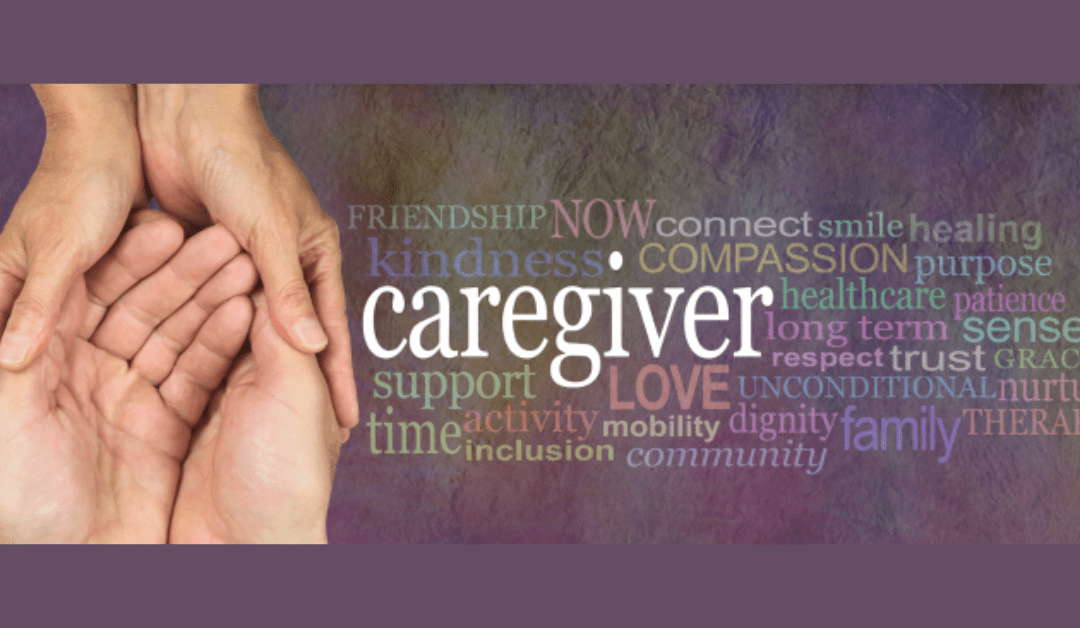
by Bag It Team | Nov 7, 2024 | Educational Articles
By Building a Backup Plan
Caregiving can take a serious toll on physical and mental health. Having a backup caregiver in place is important not only in case something unexpected prevents you from caregiving, but also for times when you may need to step away for a special event, work commitment, or simply a break to recharge. Here’s a guide to setting up a caregiver backup plan.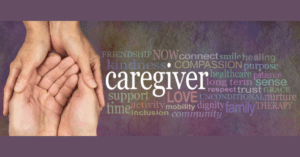
1. Identify the Key Responsibilities to be Covered. List the specific tasks or routines someone would need to take over to help you assess who could potentially fill the role and what skills they would need.
2. Determine Who Could Step In. Think about people in your network—family, friends, or neighbors—who might be a good fit. Professional caregiving services are another option; research a few providers to see which could best meet your needs.
3. Start Conversations Early. Don’t wait until you’re overwhelmed or in an emergency. Doing this now gives everyone involved time to get comfortable with the idea and address any questions or concerns without the pressure of immediate need.
4. Arrange Training and Trial Runs, Once you have someone lined up, organize training and trial runs right away. This helps your backup caregiver prepare, while also allowing your loved one to adjust to a new face in their routine.
5. Share Essential Care Details. Compile a guide for the backup caregiver covering your loved one’s health needs, emergency contacts, daily routines, and personal preferences, etc. The forms in My Companion Guidebook in your Bag It Bag can come in handy for this purpose. Update this information regularly.
Introducing a backup caregiver isn’t just helpful for you—it can also benefit your loved one by offering new social interactions, adding variety to their routine, and reducing reliance on a single caregiver, all while giving you peace of mind when you are away.
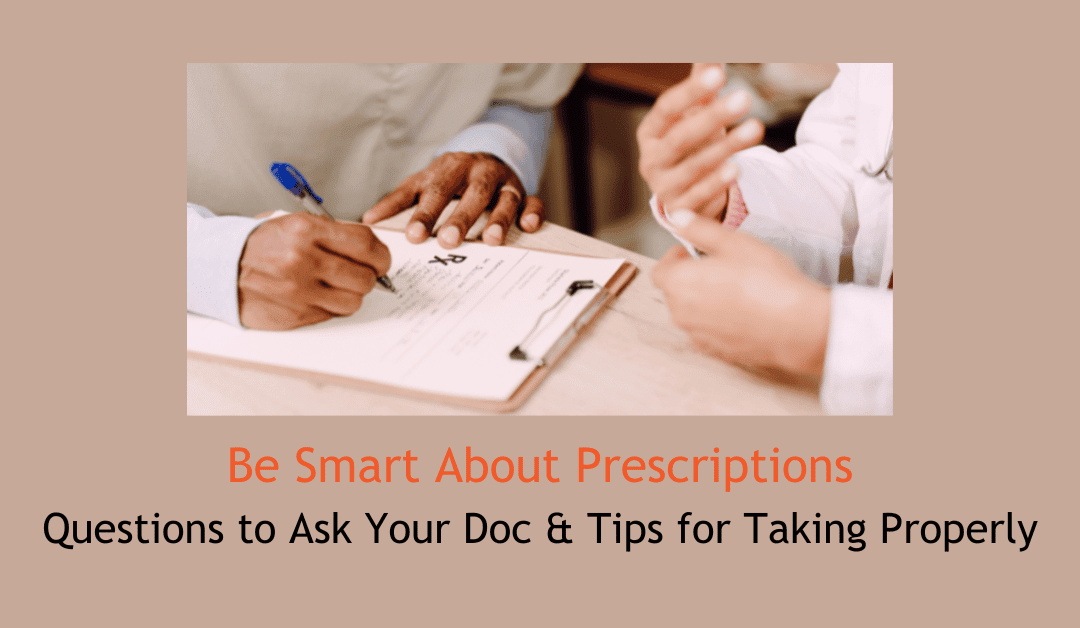
by Bag It Team | Oct 5, 2024 | Educational Articles
Taking prescriptions as directed is crucial to getting the most benefit from your medication while keeping yourself safe. To help your healthcare providers prescribe the right medications, it’s important to share a full list of everything you’re taking, including prescription drugs, over-the-counter medications, vitamins, minerals, supplements and herbs. Many supplements and over the counter medicines can interact with prescription drugs, so being forthcoming with this information is key. Also, make sure to mention any allergies.
The first step in properly using your prescriptions is understanding them. When your healthcare provider prescribes a medication, here are some essential questions to ask if the information isn’t immediately shared:
- What is the name of the medication? Get both the brand and generic names and confirm which one you’re being prescribed.
- What is the medication for? Understand the purpose of the medication and the risks of not taking it as prescribed.
- What is the correct dosage and schedule? Ask when and how often to take it, and whether it should be taken with food or on an empty stomach.
- How long will it take to work, and how can you tell if it’s effective? Know the expected timeline for results and what to do if it doesn’t seem to work.
- Are there any interactions or restrictions while taking the medication? This includes certain foods, beverages, other medications, or activities you should avoid.
- What if you miss a dose or accidentally take too much? Find out how to handle missed doses and whether refills are necessary.
- What side effects should you watch for? Both physical and mental side effects can occur, so know what to expect and how to manage them.
- Are there specific storage or handling instructions? Some medications need refrigeration, while others should be stored at room temperature or in a certain location in your home.
Tips to Help You Remember to Take Your Medications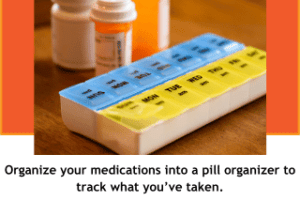
- Try to incorporate your medication routine into daily habits, like taking them with meals or at bedtime.
- Use technology, such as an alarm or a medication reminder app on your phone, to notify you when it’s time for your next dose.
- Consider asking a family member or caregiver to help remind you, especially for important medications.
- Organizing your medications into a pill organizer or separate containers for each day can make it easier to track what you’ve taken. Some pill organizers even come with built-in timers for added convenience.
Tips for Taking Medication
- Fill all prescriptions as instructed by your healthcare provider and be sure to follow the directions carefully. Complete the full course of medication unless your doctor advises otherwise.
- Never stop or change how you used medications to avoid potential safety risks.
- Use the patient forms in Section 1 of My Companion Guidebook (part of all Bag It Bags) to keep a detailed list of your current and past medications. Bring these lists to your doctor appointments and share them with your healthcare provider.
- Track your daily medication routine with customizable log forms in Section 2 of My Companion Guidebook (part of all Bag It Bags) to help you stay organized.
- It’s important to periodically review your medications with your healthcare provider or pharmacist, especially if you’re taking multiple prescriptions. This can help identify duplicate or unnecessary medications, or risky drug interactions.
- If you’re having trouble affording your prescription medications, Section 5 (Resources) of My Companion Guidebook (part of all Bag It Bags) lists organizations that may be able to help with financial support.
To see all of the helpful forms in the Bag It Bags, visit our Patient Page. You will also see a link to the forms in Spanish just under the Patients Forms heading.

by Bag It Team | Aug 26, 2024 | Educational Articles
 Recently the Cancer Care Center at the University of Arizona put the spotlight on Bag It Cancer Bags and talked to Executive Director, Mindy Griffith.
Recently the Cancer Care Center at the University of Arizona put the spotlight on Bag It Cancer Bags and talked to Executive Director, Mindy Griffith.
Read and hear about the origins of the Bag and what’s new.

by Bag It Team | Jul 29, 2024 | Educational Articles
Tips for Keeping You and Your Pet Healthy During Cancer Treatment
The “dog days of summer” remind us of the warmth and joy that pets bring into our lives, especially during tough times like a cancer diagnosis. Their companionship and unconditional love can brighten even the hottest, most challenging days. Many people consider their pets part of the family and rely on them for emotional support during difficult periods.
 Studies show that pets can significantly improve mental well-being. Many cancer centers and hospitals recognize this and offer pet therapy programs. These programs include visits to clinics, support groups and even home visits for patients. Our furry friends can lift our moods, lower stress, create a calming effect, reduce pain and have a positive impact on our overall health.
Studies show that pets can significantly improve mental well-being. Many cancer centers and hospitals recognize this and offer pet therapy programs. These programs include visits to clinics, support groups and even home visits for patients. Our furry friends can lift our moods, lower stress, create a calming effect, reduce pain and have a positive impact on our overall health.
During cancer treatment, your well-being and your pet’s well-being begins with effective communication.
It’s important to know that while you can’t give your pet cancer, having a pet can increase your risk of infection, especially if your immune system is compromised. Before starting cancer treatment, inform your doctor about your pet and how important they are to you. Discuss how your ability to care for your pet might be affected by the treatment and any potential side effects. Your doctor will provide personalized advice based on your type of cancer, specific treatments and the type of pet you have.
Precautions may vary, especially with pets like reptiles, amphibians, rodents, and birds, which can carry a higher risk of infection such as salmonella. Guidelines may include limitations on your involvement with your pet such as avoiding contact with their bodily fluids and waste, preventing scratches and possibly even limiting petting them.
Additionally, it’s crucial to keep potentially harmful cancer medications and related items out of your pet’s reach.
You may also want to consult your pet’s veterinarian to ensure your pet remains healthy during this time. Ask about essential steps, including proper grooming, keeping up-to-date with all recommended vaccinations and medications, and any necessary veterinary care.
Here are some tools and resources to help you take care of your pet during cancer:
My Cancer Circle – an online tool that helps organize the community of people who want to help you with your pet
CancerCare’s Pet Assistance & Wellness (PAW) Program features:
- Helpline
- Searchable online database to help people affected by cancer find low-cost or free pet care services
- Downloadable booklet: Planning for Your Pet’s Future Care A Guide to Caring for Your Beloved Pet After You’ve Been Diagnosed With Cancer

by Bag It Team | Jul 3, 2024 | Educational Articles
Grilling is a fun and tasty way to cook, especially in the summer. But did you know there are ways to make your grilled food healthier? Here are some simple tips to keep your food yummy and safe:
- Pick Lean Meats: Choose meats with less fat like chicken breasts, fish, or lean beef. Fatty meats can cause flames to flare up and create harmful chemicals. Trim off any extra fat before grilling.
- Marinate Your Meat: Soak your meat in a tasty marinade before grilling. Marinades with vinegar, lemon juice, or herbs can make your food healthier and protect against harmful chemicals that form when meat is cooked at high temperatures.
- Grill More Veggies and Fruits: Grilled vegetables and fruits are delicious and super healthy. Try grilling bell peppers, zucchini, mushrooms, pineapples, or peaches. They don’t create harmful chemicals when grilled, and they taste great!
- Avoid Burning Your Food: Don’t let your food get too dark or burnt. Burnt food can have bad chemicals. Cook at a moderate temperature and flip your food often to avoid charring. If parts do get burnt, cut them off before eating.
- Keep Your Grill Clean: Clean your grill regularly to get rid of old grease and food bits. This helps prevent harmful chemicals from forming.
- Pre-Cook Your Meat: Cook your meat a little bit in the microwave or oven before grilling. This way, it doesn’t have to stay on the grill too long and you can avoid harmful chemicals.
By following these easy tips, you can enjoy delicious grilled meals that are healthier for you. Happy grilling!
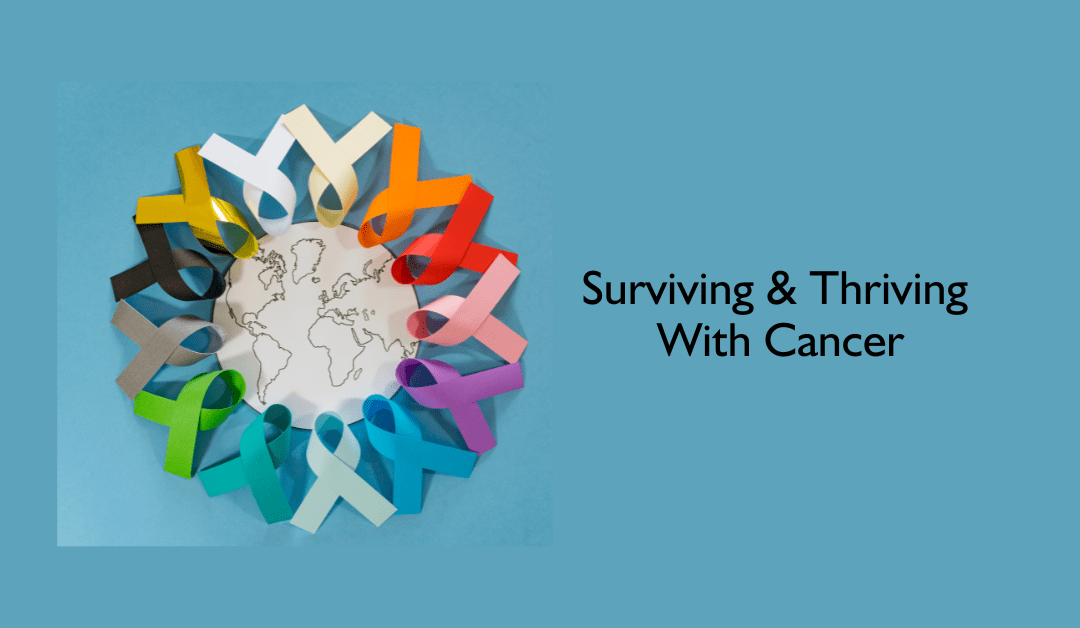
by Bag It Team | Jun 3, 2024 | Educational Articles
In honor of National Cancer Survivors Day on Sunday, June 2nd, Bag It’s own Mikey Shock has shared her personal journey of coming to terms with being a cancer survivor.
Cancer Survivor… Survivorship… They are words that usually make one think of someone who has won the battle with cancer and is in remission. But there is so much more to survivorship than we think. Survivorship begins at the time of diagnosis and continues for the rest of your life, beyond treatment. It refers to the navigation and experience of a cancer diagnosis.
For the longest time during treatment, I felt like I couldn’t use the word survivor because I had not yet beat cancer; I wasn’t in remission yet. But, others told me that I was a cancer survivor. There was so much inner turmoil because how could I have cancer? I honestly thought it was REALLY funny that I had such a diagnosis. I grew up asking my Mom if I would get the cancer she had when I was two, and she would always tell me no because it isn’t genetic. Well… it’s funny because I got the same diagnosis in the same location, and during the same time of year, 19 years later.
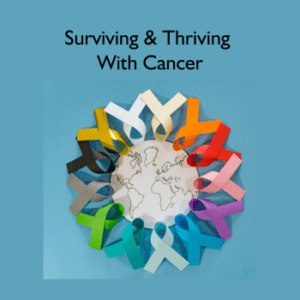 Cancer was one of the best and worst things that ever happened to me. I am so glad and grateful I had cancer. I learned so much about who I was and what I could do. Even though I know my diagnosis doesn’t define me, I now find myself constantly motivating myself by saying “I beat cancer, this is nothing!” Knowing that there is a possibility you could die because you have a deadly diagnosis changes your perspective on life and the world around you. You see things you never noticed before, you appreciate the world around you and the fresh air in your lungs (especially after you experienced a collapsed lung). My diagnosis changed me for the better.
Cancer was one of the best and worst things that ever happened to me. I am so glad and grateful I had cancer. I learned so much about who I was and what I could do. Even though I know my diagnosis doesn’t define me, I now find myself constantly motivating myself by saying “I beat cancer, this is nothing!” Knowing that there is a possibility you could die because you have a deadly diagnosis changes your perspective on life and the world around you. You see things you never noticed before, you appreciate the world around you and the fresh air in your lungs (especially after you experienced a collapsed lung). My diagnosis changed me for the better.
After months of coughing until I threw up and having my symptoms ignored by my doctor, I finally received a chest x-ray that showed my right lung collapsing and filling with fluid. Further scans at the ER revealed a massive tumor causing this destruction. After a hospital stay, lots of tests, and a month later I found out that it was Hodgkin’s Lymphoma. It was surreal because I grew up with my Mom sharing her experiences battling this diagnosis. I hear the horror she experienced because technology had not yet evolved to what it is today. I underwent 16 chemo treatments for ABVD and 15 rounds of radiation.
It wasn’t until after I was considered in remission that I started to truly process my survivorship. During treatment, I was in survival mode and wasn’t able to consider my feelings and emotions toward it, I had to get through it.
Ultimately what helped me process my survivorship was Bag It Cancer! I had read all of the materials in the binder during treatment, though I wasn’t able to process everything I was reading, I appreciated knowing I had a resource I could go to whenever I needed it. After I started working for Bag It, I began to see what a helpful resource the Bag It Bag could be. I started to attend events on behalf of Bag It where we would have an advocate table. One of my first events was a Survivorship event. I heard stories, participated in small groups, and had several discussions with oncologists and cancer survivors. This is when I started to truly process what I had just gone through!
After my treatments had ended, I became very depressed and I wasn’t sure why. I was honestly sad that I wasn’t in treatment anymore. I can’t explain it. It wasn’t survivor’s guilt, but a sadness that I had finished that journey. It also didn’t help that the cards, constant texts, and support were starting to dwindle because I was “fine” at that point. I just felt lost.
Honestly, coping with the experience of survivorship after treatment was way harder than during treatment. Again, I can’t tell you why, but I think it’s because I wasn’t in survival mode. I was finally given the time and energy to process this traumatic experience.
I also felt (and still sometimes feel) completely invalidated. I feel that when my body hurts, or when I am so tired that I can’t function, or that I get confused and foggy it’s not a valid excuse anymore because I’m not in treatment. Even a year after treatment ended, I still feel these symptoms at full force and feel like I am expected to be at my full capacity even though I can’t. For some, these long-term symptoms last months, years or even for the rest of your life after chemo.
Survivorship to me means that I am someone who has battled and beat cancer, but also continuing the battle for the rest of my life. I was poisoned with some nasty stuff, and I came out stronger. I am proud of my journey. I am a cancer survivor, and each moment is my gift. Stay strong!


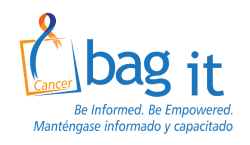




 Recently the Cancer Care Center at the University of Arizona put the spotlight on Bag It Cancer Bags and talked to Executive Director, Mindy Griffith.
Recently the Cancer Care Center at the University of Arizona put the spotlight on Bag It Cancer Bags and talked to Executive Director, Mindy Griffith.
 Studies show that pets can significantly improve mental well-being. Many cancer centers and hospitals recognize this and offer pet therapy programs. These programs include visits to clinics, support groups and even home visits for patients. Our furry friends can lift our moods, lower stress, create a calming effect, reduce pain and have a positive impact on our overall health.
Studies show that pets can significantly improve mental well-being. Many cancer centers and hospitals recognize this and offer pet therapy programs. These programs include visits to clinics, support groups and even home visits for patients. Our furry friends can lift our moods, lower stress, create a calming effect, reduce pain and have a positive impact on our overall health.


 Cancer was one of the best and worst things that ever happened to me. I am so glad and grateful I had cancer. I learned so much about who I was and what I could do. Even though I know my diagnosis doesn’t define me, I now find myself constantly motivating myself by saying “I beat cancer, this is nothing!” Knowing that there is a possibility you could die because you have a deadly diagnosis changes your perspective on life and the world around you. You see things you never noticed before, you appreciate the world around you and the fresh air in your lungs (especially after you experienced a collapsed lung). My diagnosis changed me for the better.
Cancer was one of the best and worst things that ever happened to me. I am so glad and grateful I had cancer. I learned so much about who I was and what I could do. Even though I know my diagnosis doesn’t define me, I now find myself constantly motivating myself by saying “I beat cancer, this is nothing!” Knowing that there is a possibility you could die because you have a deadly diagnosis changes your perspective on life and the world around you. You see things you never noticed before, you appreciate the world around you and the fresh air in your lungs (especially after you experienced a collapsed lung). My diagnosis changed me for the better.
Recent Comments